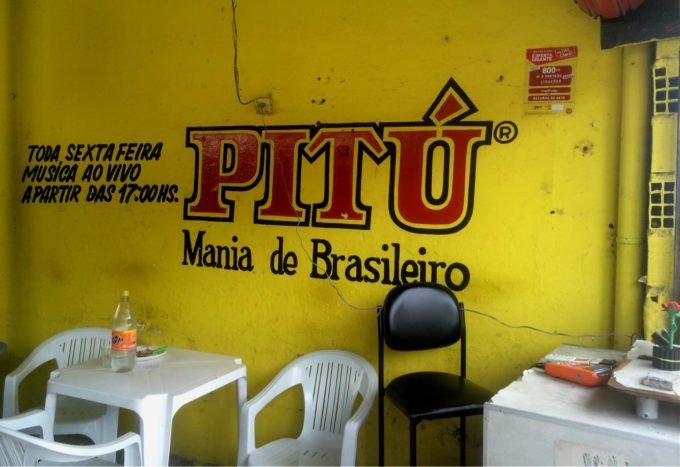
The Democratizing Effect of a Collective, Punishing Headache Caused by Strong AF Spirits

The Democratizing Effect of a Collective, Punishing Headache Caused by Strong AF Spirits
Pitu in Recife
The first time I was offered Pitu (pronounced ‘Peetoo’) was at one of Recife’s many outdoor events: a protest party in downtown Boa Vista. As the tropical rain fell on the northeastern Brazilian city, I gazed around the crowd, catching the eye of one of Recife’s many drink-vendors. These guys pull large polystyrene ice chests of alcohol around the city, somehow always managing to find their way to cultural happenings no matter how remote or late at night. The vendor shouted to me and, smiling, waved a can in my direction. “Nao!” I responded.
I had heard stories of this lethal drink: a cachaça with more than 40 percent ABV, popular with heavy drinkers and rumored to be the undoing of a famous local street poet. At only US$2 a can, the drink is so cheap that for the price of a beer you could end up under the table. Pitu seemed like Pernambuco’s answer to White Lightning, a strong, budget cider found in my native England. Pitu’s slogan, ‘Mania do Brasilero’ (Brasilian mania), plays on the drink’s infamy. Even the brand’s logo looks deadly. Its colors—black, red, and yellow—are the same as the poisonous coral snake, indigenous to Brazil.
The experience at the protest party was early on in my stay in the northeast, long before I realized Pitu’s wild popularity. This liquor transcends social boundaries. Outside of the region, Brazil’s first-choice cachaça is the famous 51. However, most people in Pernambuco embrace Pitu. The state is one of the poorest in the country and its people have a history of hostility towards outsider interference, and this seems to extend to their taste in cachaça. In Recife, the capital, the iconic red shrimp of the Pitu brand adorns T-shirts, baseball caps, shop fronts, and bar walls.
At noon at the hectic and colorful Casa Amarela market, fruitsellers share a can of Pitu under the hot, blue tarpaulins. Later in the day at one of the beachfront kiosks in wealthy Boa Viagem, an exhausted street-cleaner drinks from a large plastic cup with a big wedge of lime, and the barman pours from a can with frivolity—Pitu. At night in the trendy bars of downtown Recife, Pitu is mixed with fruit, ice, sugar, and condensed milk to create a delicious cocktail enjoyed by middle-class partygoers.
In the morning, they all wake up with the same punishing headache.